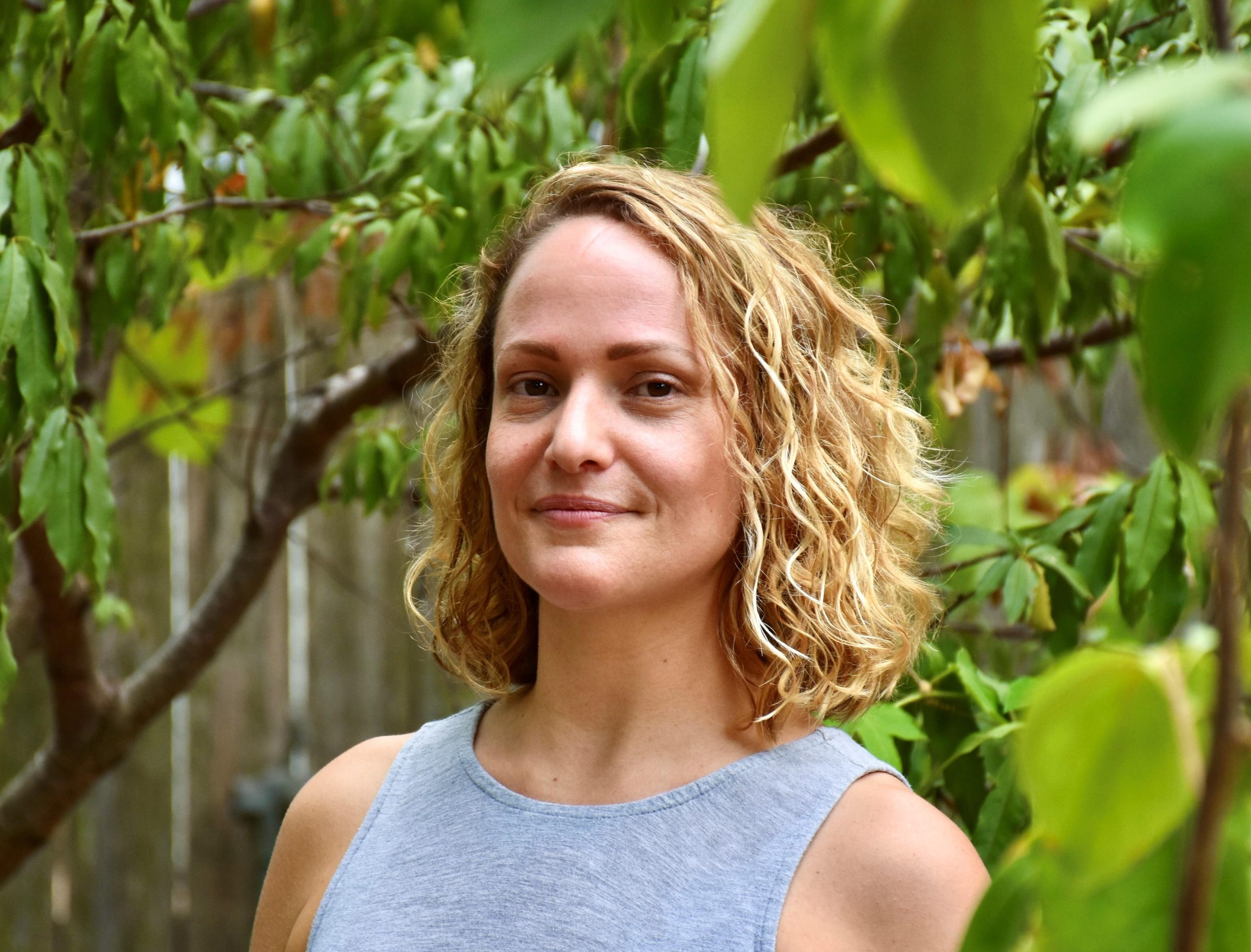
Sima Shalchi, PT, DPT, RYT
Visit types: Office
Spoken languages: English, Spanish
Interpreting services for other languages: No
What you should know about me:
Sima graduated with a Bachelor of Arts Degree in Kinesiology and French Studies from Rice University in 2015. She received her Doctorate in Physical Therapy from University of St. Augustine for Health Sciences in Austin, TX in 2018.
Sima gained interest in pelvic health during one of her clinical rotations. She practiced at a pediatric clinic for one year before working at Sullivan Physical Therapy. Working in pediatrics also made her aware of the challenges faced by postpartum women, and led her to find her passion in pelvic health therapy. Sima is eager to help her patients improve their quality of life and reach their fullest potential, while easily communicating with her patients.

Erin Frank, PT, DPT
Visit types: Office
Spoken languages: English
Interpreting services for other languages: No
What you should know about me:
Erin found both physical therapy and yoga to be everything she needed in recovery from an accident that resulted in a broken pelvis and femur and neck fractures. During her DPT training, her interest in pelvic health grew after seeing that people of all ages, genders, and varied life experiences can benefit from the attention, education, and empowerment that Pelvic Physical Therapy can provide. Outside of the clinic Erin continues to teach yoga and anatomy, and enjoys helping out with her sister’s pet-sitting business.

Megan Kalinich, PT, DPT
Visit types: Office
Spoken languages: English
Interpreting services for other languages: No
What you should know about me:
Megan Kalinich received a Bachelor of Science in Biology & Society from Arizona State University in Tempe, AZ. She received her Doctorate in Physical Therapy from Creighton University in Omaha, NE.
Megan has had an interest in pelvic health physical therapy from the beginning of her physical therapy education as she pursued additional academic training during her physical therapy schooling at Creighton University. She has worked at multiple practices in the Austin area where she was able to develop her skills in both pelvic and orthopedic physical therapy. Throughout this time, her passion has continued to grow for the pelvic health population. She enjoys assisting her patients in overcoming their symptoms and helping them to become empowered through knowledge.

Makenzie Cochran, PT, DPT
Visit types: Office
Spoken languages: English
Interpreting services for other languages: No
What you should know about me:
Makenzie graduated from The University of Texas at Austin with a Bachelor of Science in Communication Studies and minor in Business in 2015. After graduating she spent time serving the Austin community through nonprofit work before deciding to pursue a career in physical therapy, and in 2021 she received a Doctorate in Physical Therapy from the University of Texas Health Science Center at San Antonio.
Makenzie became interested in pelvic health while observing at Sullivan Physical Therapy during graduate school and has since sought to increase public awareness and knowledge of pelvic floor therapy in hopes of improving patient access and care. She is committed to being an advocate for her patients and strives to empower them to be autonomous in their health journey through continued education.
Makenzie is a member of the American Physical Therapy Association as well as their Section on Women’s Health. She has completed continuing education on pelvic floor diagnoses and treatments, as well as specific courses in myofascial release.

Kimberlee Sullivan, PT, DPT, WCS, BCB-PMD
Visit types: Office
Spoken languages: English
Interpreting services for other languages: No
What you should know about me:
Kimberlee Sullivan graduated with a Bachelor of Science Degree in Sports Medicine from Pepperdine University. She received a Doctorate in Physical Therapy from Creighton University. Since her clinical affiliation Kimberlee has focused her profession on pelvic floor dysfunction.
She has worked with orthopedic and pelvic health patients for twenty years in states such as Oregon, Minnesota, and Texas. In October of 2005 she opened Sullivan Physical Therapy where she could focus on patients with pelvic floor dysfunction such as incontinence, overactive bladder syndrome, interstitial cystitis, organ prolapse, sciatica and pelvic pain.
Kimberlee is a member of the American Physical Therapy Association, Orthopedic and Women’s Health Sections. She is also a member of the National Association for Continence, Endometriosis Association, Interstitial Cystitis Association, National Vulvodynia Association, International Pelvic Pain Society, Texas Physical Therapy Association and the International Society for the Study of Women’s Sexual Health.
Kimberlee is board certified in Women’s Health Physical Therapy by the American Board of Physical Therapy Specialists. She is a recipient of the Certificate of Achievement in Pelvic, Pregnancy and Postpartum Physical Therapy by the Section of Women’s Health. She has received certification by the Biofeedback International Conference for Pelvic Biofeedback.

Taylor Reyes PT, DPT
Visit types: Office/Hospital.
Spoken languages: English and Spanish
Interpreting services for other languages: No
Philosophy of care and typical treatment strategies: My philosophy in caring for my patients with endometriosis involves education in self-management, manual therapy techniques, managing the autonomic nervous system, and anti-inflammatory nutritional counseling within the scope of PT.
Self-management is a huge key to empowerment as navigating endometriosis symptoms is sometimes a lifelong journey. I want my patients to feel empowered and not helpless if they are not able to see a provider during a flare-up. Self-management may include home exercise programs, yin-based yoga, castor oil packing, and more.
I incorporate visceral, neurovascular, fascial, joint, and more in my manual therapy approach. Often a patient’s issue goes beyond the pelvis so it’s important to consider a total body approach. Neuromuscular reeducation and motor control training is a must with any manual therapy. Some of the modalities I use to assist in manual therapy are trigger point dry needling, neurostim microcurrent for scar tissue, and cupping. Orofacial myofunctional therapy and cranial therapy are incorporated as needed especially if a patient needs to improve their overall airway function which aids in improving the autonomic nervous system.
My patients are educated in the basics of anti-inflammatory nutrition support and downregulation of the nervous system. If their needs go beyond my scope they are referred to specific providers that also specialize in autoimmune and endometriosis conditions.

Dr. Rachael Haverland
Rachael Haverland, M.D.
Dr Rachael Haverland – Endometriosis Specialist, Gynecologist, Minimally Invasive Gynecologic Surgeon
Summary: Dr Rachael Haverland is a gynecologist and endometriosis specialist in Dallas, TX, known for her thoughtful, holistic approach to care. As a minimally invasive gynecologic surgeon, Dr Haverland focuses on complete excision surgery—the gold standard for endometriosis treatment—and supports recovery through a multidisciplinary care plan. Many Dr Rachael Haverland reviews highlight her dedication to addressing the full picture of pelvic pain, including related conditions like IBS and interstitial cystitis.
With a strong belief that every patient’s journey is unique, Dr. Haverland avoids one-size-fits-all treatments and limits the use of medications with harsh side effects. Instead, she often combines non-opioid pain management, pelvic floor physical therapy, and collaborative care with other specialists. Patients value how Dr. Rachael Haverland takes the time to uncover the root causes of pain and stay involved throughout the healing process—an approach that consistently earns praise in Dr. Rachael Haverland reviews.
City: Dallas, TX, USA
Philosophy: The etiology of endometriosis is complex. I do not agree with retrograde menstruation as I have seen premenstrual as well as postmenopausal patients with endometriosis. This also leads to the idea if you stop menstruation, you stop the pain which is not always the case. While more research on endometriosis needs to be done, I do believe the endometriotic implants are likely genetically present consistent with the Mullerianosis theory. They may additionally spread by lymphatic or blood systems ( how we get cardiac and pulmonary endometriosis). Endometriosis for gold standard treatment must be excised completely. Once appropriate excision surgery has been completed, a dynamic team approach with pelvic floor PT, injections by physiatrists and frequent postoperative visits to ensure no other additional diagnosis was missed is important. Frequently IBS, IC, or other chronic conditions are found in patients with endometriosis.
Medication: Endometriosis treatment is multifaceted and must start with a holistic approach to not only management of the endometriosis but also the other disease processes. I reserve/restrict the use medications such as Lupron, Orlissa, or other GnRH agonists or antagonists due to significant physical and mental side effects. Medications can be used to help symptoms if a patient does not desire excision surgery and options such as progesterone IUD or birth control pills are offered if desiring contraception. I also discuss after surgery, the first 2-3 cycles may be irregular and or more painful due to acute inflammation. Frequently, I use other non-opioid mediations such as NSAIDs, duloxetine, gabapentin, other SNRIs and compounded medications in adjunct depending on the patient’s pain generators.
Approach to Persistent Pain After Surgery: Multidisciplinary approach is the key to success! After patients have been in prolonged pain, the central sensitization of pain cycle can be important to address. Using compounded vaginal suppositories, pelvic floor PT, pelvic floor Botox and also targeted nerve injection series with physiatrist can be beneficial to address pain after surgery. If persistent pain continues, my approach is individualized. First, I closely evaluate each organ system to ensure we are addressing each area in a holistic approach at the initial visit to identify potential coexisting pain generators. At the initial consultation visit I also identify other compounding potential etiologies of pain. Sometimes a second look is necessary or discussion of other forms of hormonal suppression. I always follow my patients until their symptoms are improved.

Lisa Whisenant, OTR
Visit types: Office/Hospital/Virtual/Home
Spoken languages: English
Interpreting services for other languages: No
Philosophy of care and typical treatment strategies:
I treat holistically, looking at the full body. Diaphragmatic breathing education and techniques, proper core and pelvic floor contract/relax, lengthening abdominals, functional positioning and mobility, bowel, bladder, and sexual habits and routines, visceral mobilization, myofascial release, cupping, dry needling, adaptive equipment/modalities such as squatty potty, dilators/wands, vibration.

